
Snowy Owls Invade Ottawa
January 3rd, 2014
We're in the midst of one of the biggest Snowy Owl irruptions in history. Local experts say that hundreds of them are now in southern and eastern Ontario. One even showed up as far south as Florida recently! These arctic owls (which non-birders may recognize as Harry Potter's owl) had a very successfully breeding season in the far north, and all the newly fledged young were eating themselves out of house and home. So, as it happens with many far-northern birds when food is scarce and/or numbers swell, the excess travelled south for the winter. (Snowy Owls will happily stay in the arctic year-round if food is sufficient.) I found this one today in a field off Eagleson Road.

He allowed me just a few shots before he decided I was too close for comfort, and retreated to the top of a telephone pole.



A Mouthful Of Autumn
December 8th, 2013
A trifecta of cute rodents at Andrew Haydon Park.
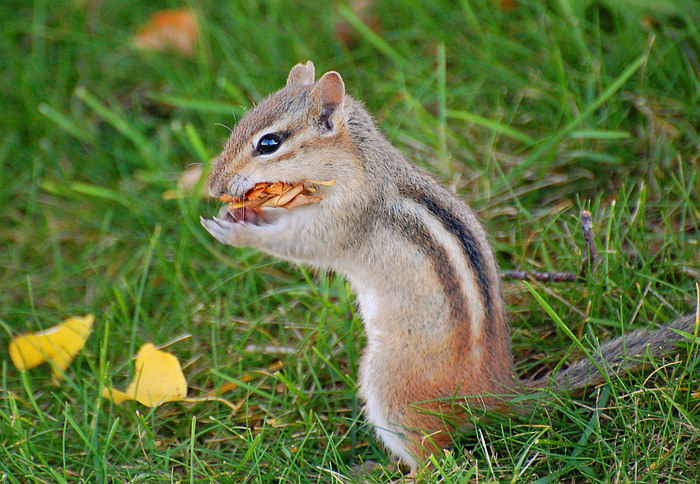
1680x1050 wallpaper
This chipmunk was gathering up fallen leaves at the park in late September, probably to line his burrow with.

1680x1050 wallpaper

1680x1050 wallpaper
Red Squirrel says "cheese"! Sometimes they actually seem to be posing for you.
Cormorant Portrait
November 3rd, 2013
This Double-Crested Cormorant lingered on the west pond at Andrew Haydon Park for weeks. I think he's finally continued on his fall migration now.
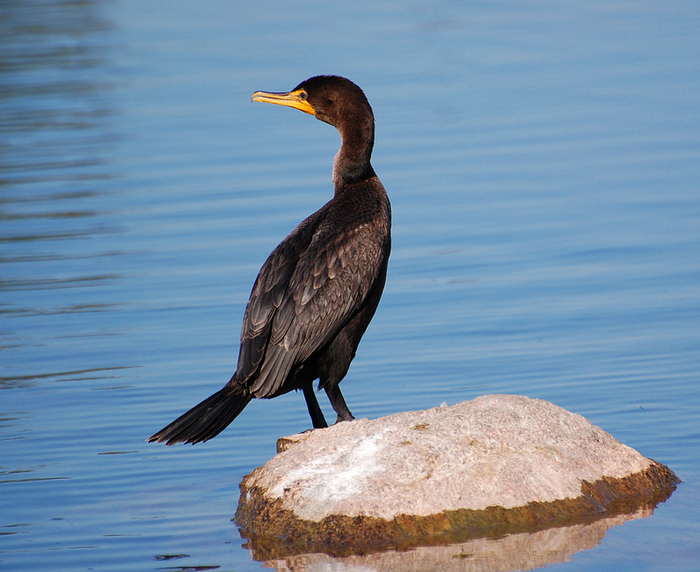
1680x1050 wallpaper
Little Devil Diver
October 31st, 2013
Great birding along the Ottawa River yesterday morning. The breeze coming off the water gave a clue as to why: it seemed the fall migrants had a tail wind!
At the rock jetty at Dick Bell Park, another photographer and I enoyed a very tame pair of Horned Grebes who swam close enough for good pictures. (The more usual way to see migrant Horned Grebes is at a great distance with a telescope.) The overcast conditions made it difficult, but I was still able to capture the one bit of color, their red eyes.
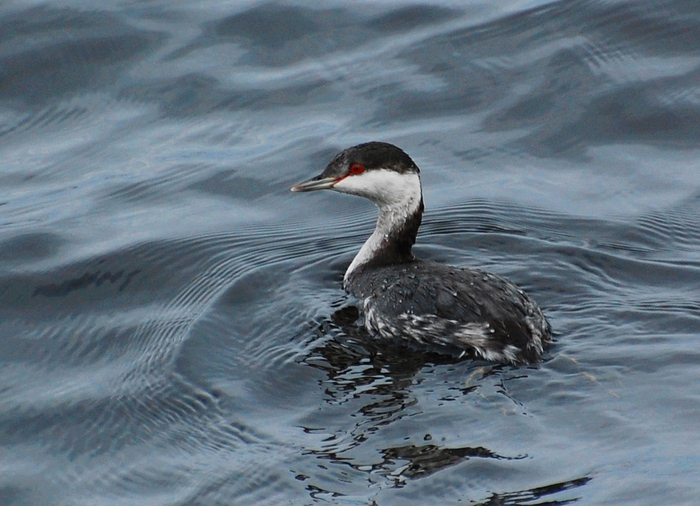
1680x1050 wallpaper
Looking at this little cutie, you might wonder why such an unassuming bird earned the folk nicknames "Devil Diver" and "Water Witch." That's because, in breeding season, the Horned Grebe's red eyes positively glow and are joined by a spectacularly wild multicolored plumage. We here in Ottawa seldom get to experience that, since most of our Horned Grebes show up in late fall. They breed in the central and western provinces.
A Feast Of Color
October 7th, 2013
For a month or two in late summer or early autumn, male ducks are in eclipse. Eclipse is a drab, female-like plumage that helps camouflage the drakes at a vulnerable time (while they're molting their flight feathers.) It's sort of a dull time for nature photographers. It's the reason why I've never posted a single picture of the handsome Blue-Winged Teal: the period of their eclipse overlaps almost perfectly with their fall migration through Ottawa, which is usually the only time I see them.
But for our local Wood Ducks, at least, eclipse is now over, and every feather of the newly-grown breeding plumage is fresh and vivid. There is no better time for appreciating the splendor of the drake Wood Duck.
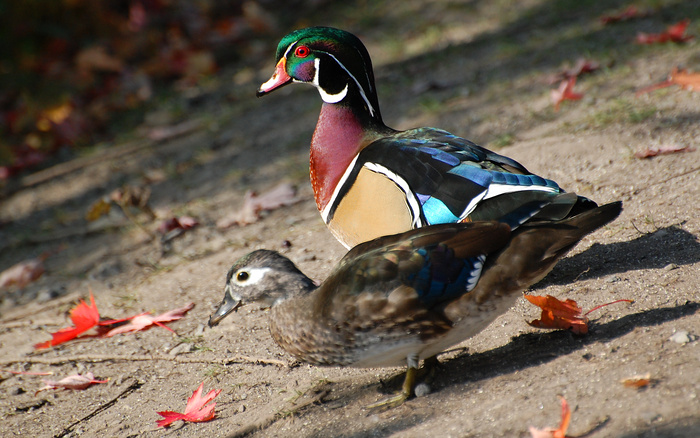
1680x1050 wallpaper
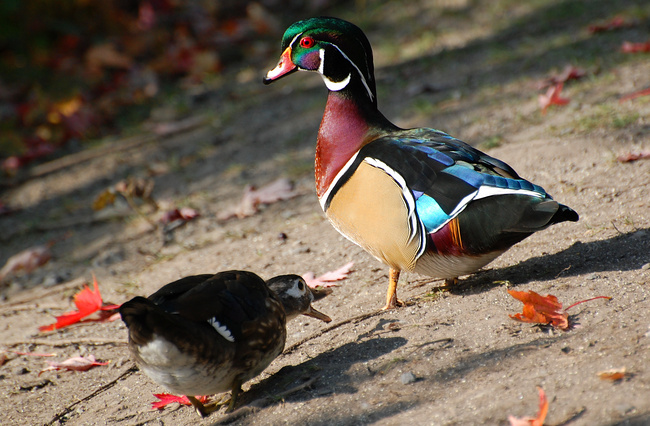
1680x1050 wallpaper
Yes dear, I think I share the sentiment.
Actually that was the beginning of an interesting bit of interaction, which I captured in five shots in quick succession. At the time I interpreted it as an aggressive encounter, but after studying the photos I don't think so. It looks more like...well, see for yourself!
( Click to continue )
Summer Insects Roundup
September 30th, 2013
A selection of interesting and/or beautiful insects I've photographed in the past couple months, before the weather turned cold.
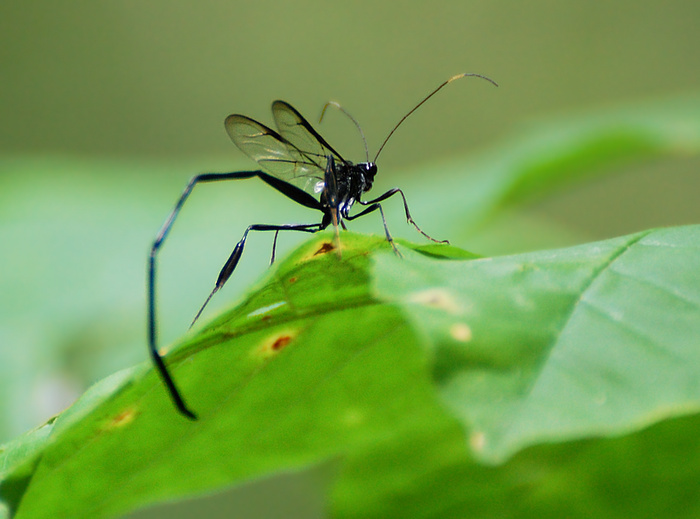
1680x1050 wallpaper
This one is as unique as it looks. It's a pelecinid wasp. It's the only species of its family in North America (of only three worldwide.) It is harmless to humans: that long scary-looking abdomen is merely an ovipositor (egg-laying appendage), not a stinger. The female uses it to penetrate well into the soil and lay her eggs on beetle larvae, which serve as food for her own larvae.
The most unusual thing about these wasps is that males are extremely rare. Reproduction is usually by parthenogenesis. That is, the females clone themselves.
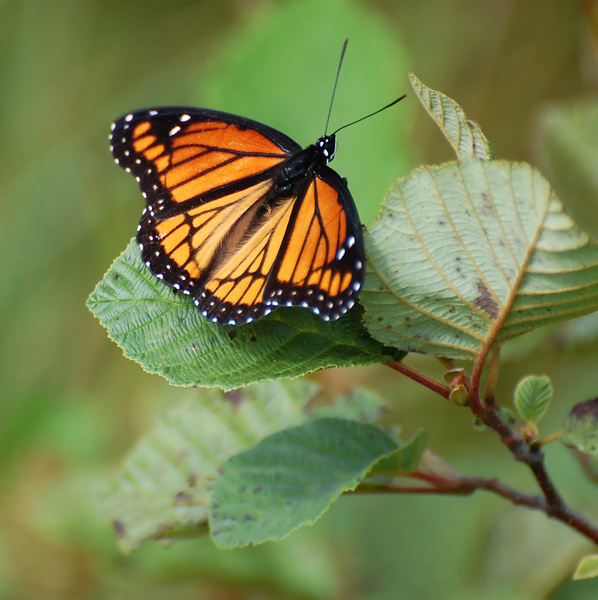
1680x1050 wallpaper
When this Viceroy made an appearance, every other color in sight seemed muted.
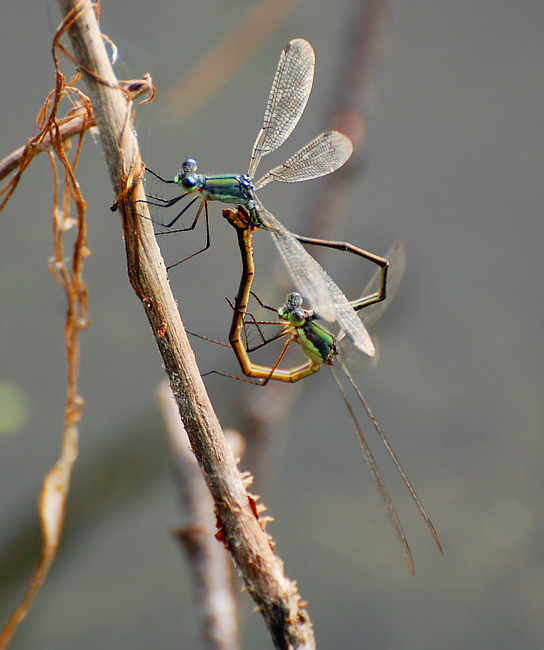
I love it when mating damselflies make a heart out of their bodies.
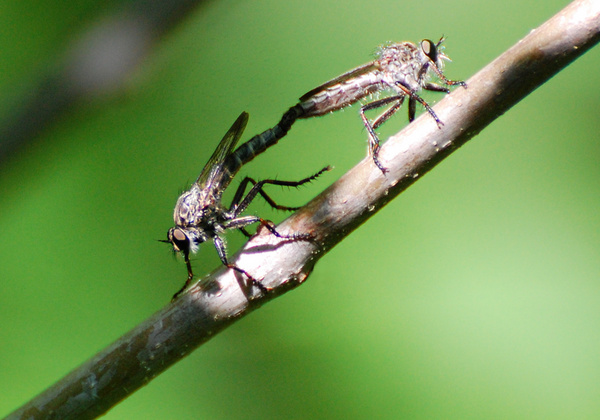
Mating Robber Flies. While we usually think of flies as detrivores or parasites, robber flies, also called assassin flies, are full-blown predators, with a lifestyle similar to odonates.
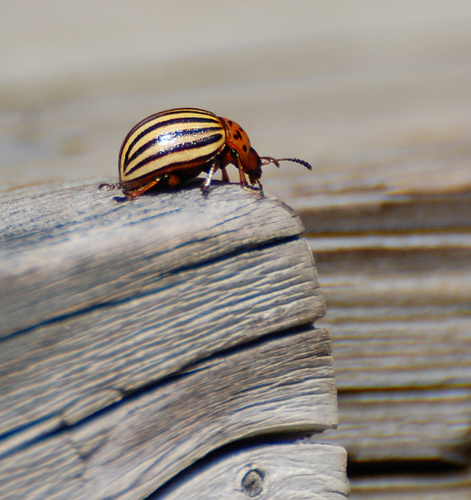
This fellow crawled by near the stream at Sugarbush Loop where I was photographing jewelwings. I found him cute and wondered if he was related to ladybugs. Turns out he's a Colorado Potato Beetle, a major pest on potato and related crops.
Oh well. He's cute anyway!
Pondside Slinker
September 23rd, 2013
The little Green Herons, practically a quarter the size of the Great Blues, are more challenging to capture. They slink around the edges of the ponds, hidden beneath the overhang, so that even an avid birder can walk by and be none the wiser unless you know where to look. They retreat into grassy cover when you approach, or, if you approach too enthusiastically, simply flush. But it's possible to sort of win ones trust if you stalk it patiently enough--especially if it's busy stalking its own game.
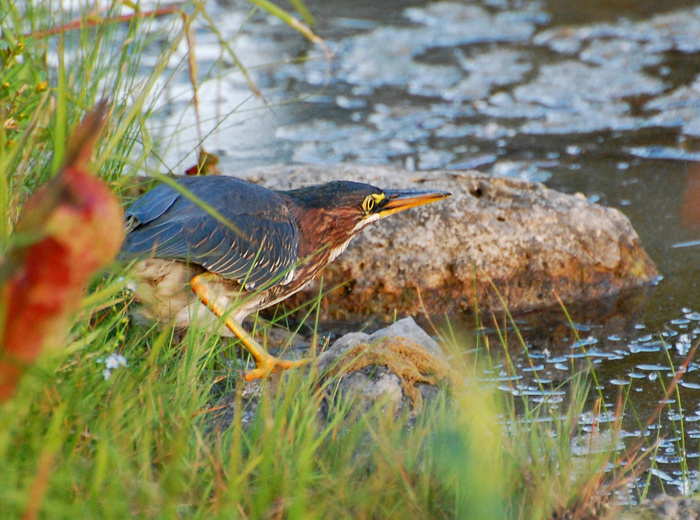
How to tell a photographer to take a hike
September 21st, 2013
Four species of herons have been at Andrew Haydon Park lately: Great Blue Herons, Night Herons, Green Herons, and Great Egrets. Basically all the herons that occur in Ottawa except for the super-secretive bitterns! It's a photographer's dream. Of them, the big, bold Great Blues are by far the easiest to capture.
ETA: make that five species of herons at AHP! Browse over to Gillian's blog to read about her close encounter with a Least Bittern.
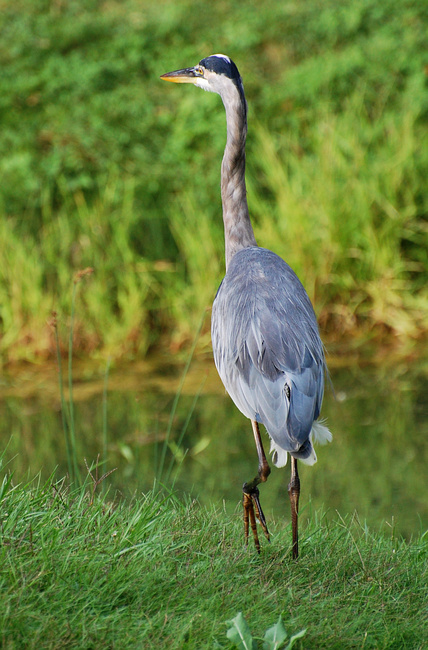
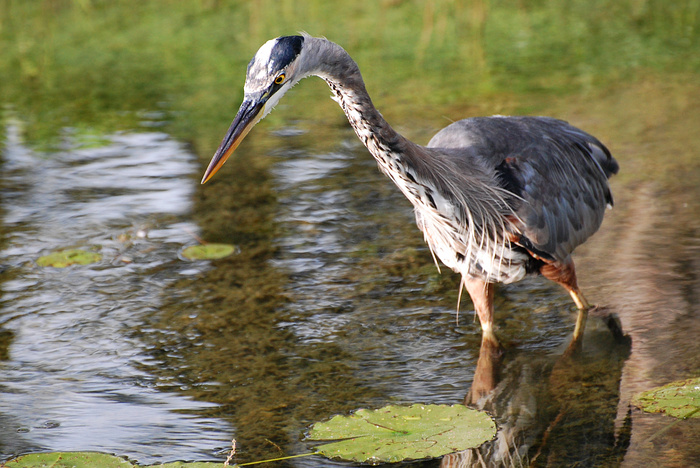
1680x1050 wallpaper
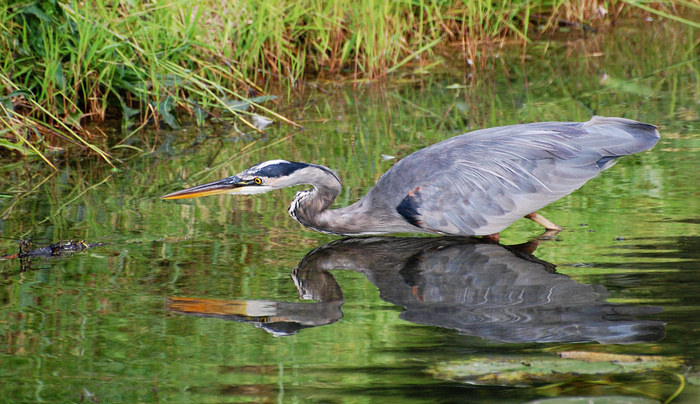
It's difficult to see at this resolution, but he's got his sights on an egg-laying dragonfly. Great Blue Herons typically eat fish, but it's not unusual for them to take an occasional insect snack.
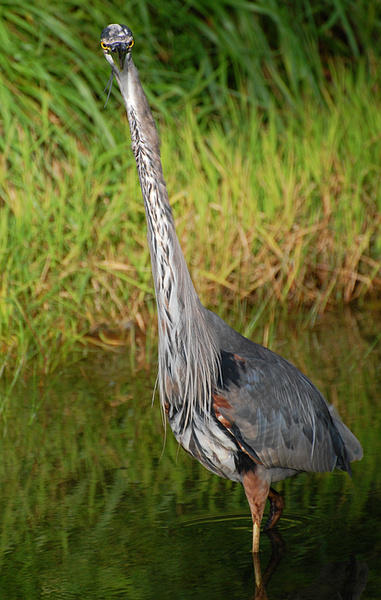
"Oh, are you having trouble fitting me in the frame? I'm sorry. Maybe you should go annoy someone else now."
The Next Generation
September 18th, 2013
It's been a really successful breeding season for the Wood Ducks at Mud Lake. Independent juveniles are everywhere now. This group by the bridge was in a perfect place for photographs.
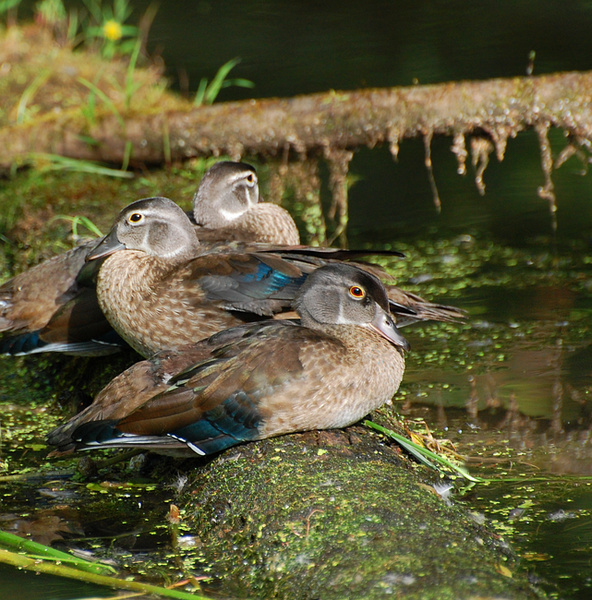
1680x1050 wallpaper
Look closely (or at wallpaper res) and you can see the red eye of the male in front, a harbinger of the gaudy plumage he'll wear in maturity.
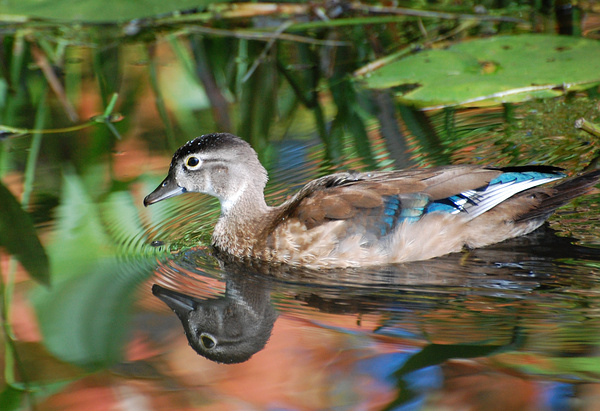
It was one of those golden moments when the sun was splashing all the surrounding colors onto the water.
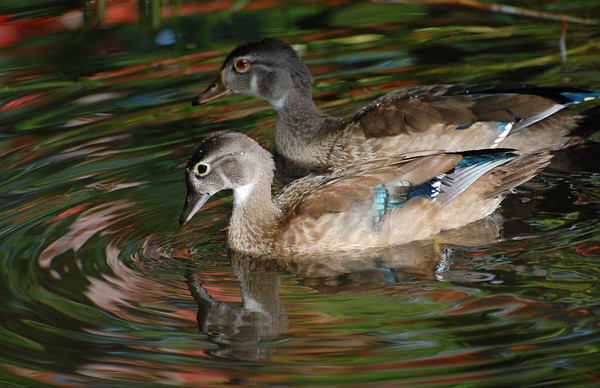
We interrupt your regularly scheduled Ottawa nature photos...
September 16th, 2013
...for this moose!
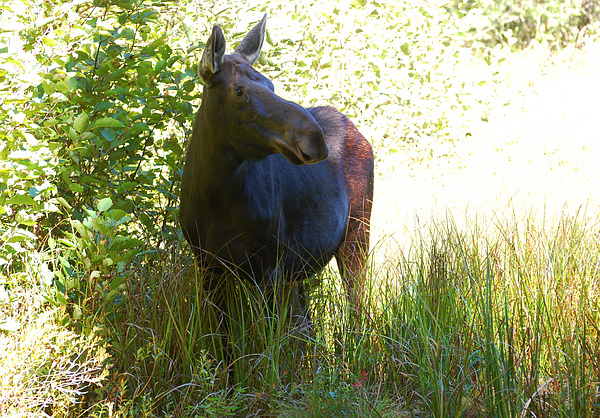
1680x1050 wallpaper
My husband and I just got back from a five-day mini-vacation in Algonquin Provincial Park. We stayed two nights in a B&B on the east side of the park, then two nights in another B&B on the west side, and spent most of our days hiking. I've been wanting to experience Algonquin for years and am thrilled that I finally did!
We encountered this cow moose up close and personal on Mizzy Lake Trail. And when I say "up close and personal", I mean I had to dial my zoom lens all the way back just to get her in the frame. She grazed to within ten feet of us and a group of German tourists, all staring wide-eyed and gasping and fumbling with our cameras. Much further away, across a bog pond, was another cow, and the immense antlers of a bull were visible behind her.
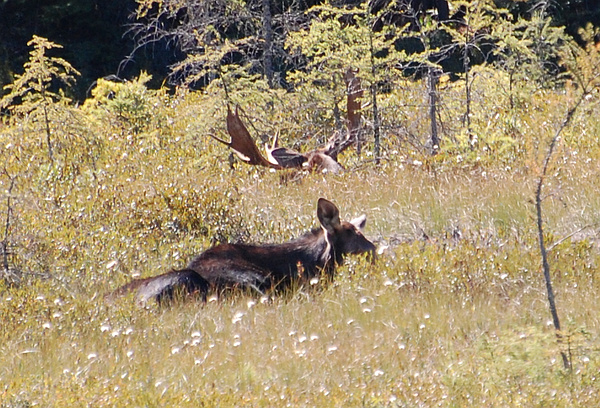
These are the only photos I have to show from the trip, though. Photo ops were rare, with pretty much all the birds we found being distant, hyperactive, or both. There were numerous migrant flocks of warblers and kinglets, distant loons, distant waterfowl, and ravens and blue jays galore. I had been hoping to see some of Algonquin's boreal specialties (species normally only found further north), but unless you count the moose, I only saw one, a female Black-Backed Woodpecker along High Falls Trail. However, it is maddeningly possible that the grouse that flushed near the edge of a spruce bog (on Bat Lake Trail) was the Spruce Grouse I had been hoping to lifelist. It was gone before we could see anything but a flurry of wings.
Rivalling the close-up cow moose for excitement level, at least for me, was my 327th lifer: American Pipit. Pipits are unusual songbirds that act like shorebirds. When a flock of some thirty of them flew back and forth high in the air over a bog pond, I initially assumed they were Cedar Waxwings, since that's what they looked and acted like. But their voices, more like those of goldfinches than waxwings, confused me. I was then stunned to see every single bird settle down into the mud at the margin of the pond, and start picking around for food like sandpipers. "They're shorebirds!" I exclaimed to my husband, before realizing that no shorebirds looked or sounded quite like this. As I watched them forage, I noticed their tails bobbing up and down, and that's when I realized they must be American Pipits. This species is considered common in Ottawa in fall migration, but it has eluded me for years.
I'm eager to go back and find more of Algonquin's boreal specialties: to see Spruce Grouse and Pine Marten, and have Gray Jays take peanuts from my hand. Perhaps a daytrip is in order this winter!
|
